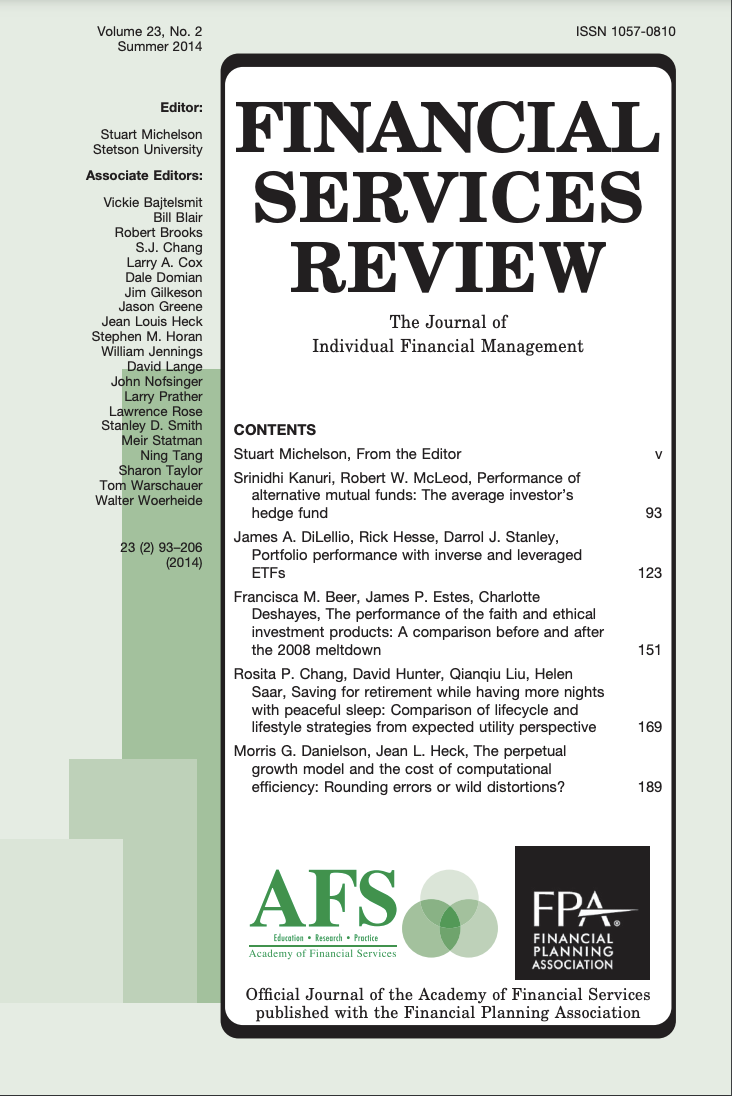Saving for retirement while having more nights with peaceful sleep
Comparison of lifecycle and lifestyle strategies from expected utility perspective
DOI:
https://doi.org/10.61190/fsr.v23i2.3132Keywords:
Retirement saving, Target-date funds, Life cycle investingAbstract
We evaluate the fit of target-date funds (TDFs) as the main retirement savings instrument for the utility-maximizing investor who becomes more risk averse as she gets older. Using bootstrapping simulations, we show that TDFs can provide higher expected utility than the alternative lifestyle strategies. With loss aversion incorporated in the model, we still find that the optimal lifecycle strategy over time leads to higher expected utility than the best lifestyle strategy. Therefore, TDFs are preferable to the utility-maximizing investor. However, lifecycle strategies are not one-size-fits-all solution and investor’s risk tolerance has to be considered when selecting TDF funds.

Downloads
Published
How to Cite
Issue
Section
License
Copyright (c) 2014 Academy of Financial Services

This work is licensed under a Creative Commons Attribution-NonCommercial 4.0 International License.
Author(s) retain copyright and grant the Journal right of first publication with the work simultaneously licensed under a Creative Commons Attribution-NonCommercial 4.0 International License that allows to share the work with an acknowledgment of the work's authorship and initial publication in this Journal.
This license allows the author to remix, tweak, and build upon the original work non-commercially. The new work(s) must be non-commercial and acknowledge the original work.

